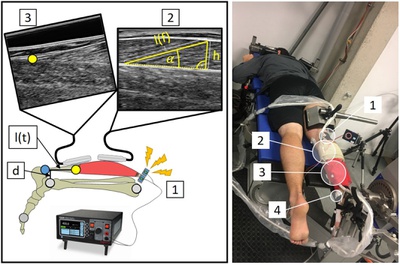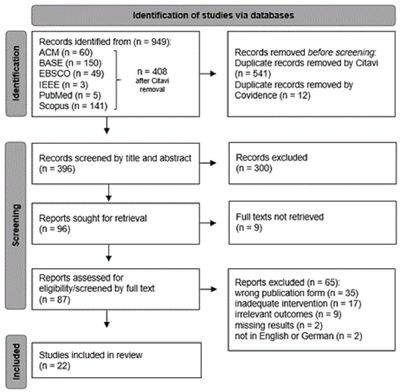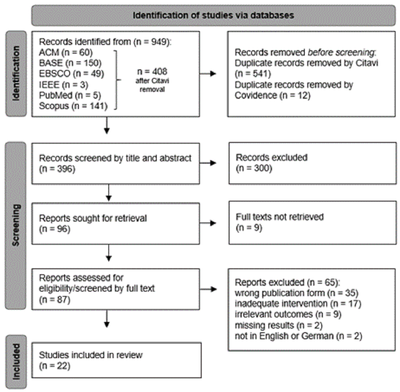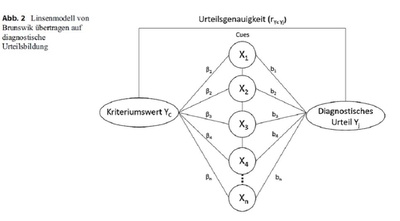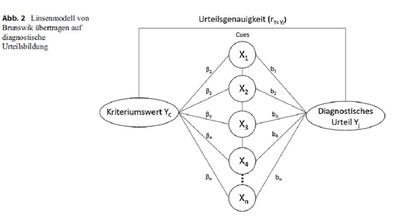Influence of esports on Sleep and Stress
18 Januar 2023
Abstract
Abstract. Recreative sleep and a low stress level are important health- and performance-enhancing factors in daily life. The present investigation examines the influence of esports on sleep and stress. In a counterbalanced within-subjects design, 44 participants (37 males, 7 females, 25.2 ± 4.6 years old) completed both a gaming and a nongaming session on two consecutive evenings. We assessed individual sleep duration and individual stress parameters via a Garmin® smartwatch in addition to a short subjective scale. The results show that, in the gaming condition, total sleep time was significantly lower than in the nongaming condition (p = .003). The participants’ stress level was significantly increased after gaming compared to nongaming (p = .005). Future research should not only examine the long-term effects of esports on health longitudinally, but also establish suitable sleep interventions and stress coping strategies.
Zusammenfassung. Erholsamer Schlaf sowie ein geringes individuelles Stressniveau sind wichtige gesundheits- und leistungssteigernde Faktoren im alltäglichen Leben. Ziel der vorliegenden Untersuchung war es daher, den Einfluss von E-Sport auf den Schlaf und Stress zu untersuchen. In einem ausbalancierten Within-Subjects-Design absolvierten 44 Teilnehmende (37 Männer, 7 Frauen, 25.2 ± 4.6 Jahre alt) an zwei aufeinanderfolgenden Abenden sowohl eine Gaming- als auch eine Non-Gaming-Session, während derer jeweils die Schlafdauer und das individuelle Stresserleben mittels einer Garmin®-Smartwatch und einer kurzen subjektiven Skala erhoben wurden. Die Ergebnisse zeigen, dass die Gesamtschlafzeit nach dem Spielen signifikant niedriger war als nach dem Nichtspielen (p = .003). Ebenso war das Stressniveau der Teilnehmenden nach der Spielbedingung im Vergleich zur Nichtspielbedingung signifikant erhöht (p = .005). Zukünftige Forschung sollte somit nicht nur die langfristigen Auswirkungen von E-Sport auf die Gesundheit im Längsschnitt untersuchen, sondern auch geeignete Schlafinterventionen und Stressbewältigungsstrategien etablieren.
The popularity of esports – the competitive, virtual playing of computer or video games (§2 ESBD; eSport Union Germany, 2018) – is rapidly increasing over the last decade. This trend is observable both in the increasing number of platforms and available games and in the growing amount of esports players. Besides the quick and easy access, the current digital rethinking because of the Covid-19 pandemic is especially supporting this gaming industry boom. Regardless of whether esports should be defined/categorized as sports or as virtual games, the effects of esports on several psychophysiological outcomes have increasingly been examined from a scientific perspective. However, the scientific understanding and knowledge of esports and its effects is still at the beginning (Cranmer et al., 2021; Kelly & Leung, 2021; Leis et al., 2021). First studies in this context show that recurring sleep deprivation because of (intensive) gaming sessions in the evening or competitions in different time zones seem to be prevalent (Bányai et al., 2019; Smith et al., 2019). Furthermore, in their eSport survey, Froböse et al. (2019, 2020) showed that esports players (n = 1100) not only sleep about 40 minutes less than the German average but also subjectively rate the quality of their sleep negatively. In addition, the increasing number of intervention studies (e. g., Akçay & Akçay, 2020; Miskoff et al., 2019) – mainly in the amateur and leisure context – as well as first systematic reviews (Leis & Lautenbach, 2020; Pedraza-Ramirez et al., 2020; Peracchia & Curcio, 2018) indicate higher stress levels and less sleep in digital gamers. In particular, nightly gaming sessions are related to reduced sleep duration and altered awakening, manifesting in increased daytime sleepiness and sluggishness (Miskoff et al., 2019). Following Exelmans and van den Bulck (2015), gaming 1 hour immediately before going to bed negatively influences the time spent in bed, the duration of sleep, and the overall quality of the periods of falling asleep and waking up. These results were examined using a standardized questionnaire in a face-to-face-interview setting (n = 844). Hierarchical regression analyses showed gaming volume to be a significant predictor for the named sleep variables. If playing time is increased to 150 minutes, sleep duration is reduced by an average of 27 minutes, together with a decrease in sleep quality of about 7 % (Akçay & Akçay, 2020). Lee et al. (2021) found similar results, showing via wrist-actigraphy and standardized sleep and mood questionnaires that professional esports players (n = 17, mean age 20.00 years) sleep less than 7 hours and might have a rather poor to depressed well-being. Based on heart rate recording during playing, Lee et al. (2021) have also determined that the inner excitement, observable in an increased heart rate or significantly increased activity of the very low frequency component of heart rate variability (cf. arousal in sport), seems to similarly affect falling and staying asleep. Accordingly, Hartmann et al. (2019) demonstrated in a laboratory study with adolescents (n = 18, mean age 16.84 years) that a single gaming session of 300 minutes is associated with a reduced sleep efficiency of –3.5 % (p = .017, r = .40). In contrast, adequate and restful sleep as well as low individual stress levels are important health- and performance-enhancing factors in daily life (Grandner, 2017). Referring to Zimbardo and Gerrig (2004), stress is a pattern of specific and nonspecific psychological and physical responses of an individual to internal or external stimuli. While good stress (“eustress”) positively stimulates adaption and activates the organism, bad stress negatively affects health and can cause (chronic) illnesses (Lu et al., 2021). Similarly, in their transactional stress model theory, Lazarus and Folkman (1984) formulated that the individuals’ stress reaction in the same situation can differ because of individual perception of the stressor and available coping resources (Biggs et al., 2017). Regarding the influence of esports on stress, in their review Palanichamy et al. (2020) summed up that, because of the competitive nature of esports, arousal and stress increase in accordance with individuals’ pressure to perform by simultaneously decreasing emotion regulation. Poulus and colleagues (2020) found similar results in their questionnaire-based survey with n = 316 professional esports players (mean age 22.61 years), revealing an accumulation of stress during gaming. Furthermore, Canale et al. (2019) demonstrated in n = 605 respondents (mean age 24.01 years) who played digital games at least half an hour per week that longer hours of gaming per week are combined with increased perceived stress and less psychological resilience. Thus, according to the mentioned findings, esports seems to negatively affect sleep behavior and is consequently related to higher stress levels. However, to date studies have not experimentally investigated the respective triad relationship between esports, sleep, and stress. Therefore, the present study aimed to quantitatively examine the influence of esports – more precisely the effect of nightly gaming – on sleep and stress in a real-world setting. We hypothesized that, compared to nongaming, even a single evening of gaming reduces sleep duration (Hypothesis 1) and sleep quality (Hypothesis 2), which leads to an increased accumulation of individuals’ stress (Hypothesis 3).
Methods
Participants
A total of 44 participants (37 male, 7 female, 25.2 ± 4.6 years old) voluntarily took part in this study. The university’s Ethics Committee approved all procedures, and all participants provided informed written consent. The research was conducted in accordance with the Declaration of Helsinki (Wiesing & Ehni, 2014). All participants were young adults who were not suffering from diagnosed sleep disturbances. Furthermore, to ensure that the participants were gaming at least on an amateur level, participants had to fulfill the criterium that they were gaming at least 200 minutes regularly per day (for classification of esports players, see Tholl et al., 2019).
Study Procedure
The investigation was conducted on two consecutive days/evenings per participant (see Figure 1); the order of the sessions (gaming [G] respectively nongaming [NG]) was counterbalanced. For G, participants played the game they usually played on their computer or games console. The lighting and audio volume did not change, and the gaming environment was the same as their normal playing situation. For NG, participants would relax, meditate, read a book, or listen to music but necessarily avoid social media or other electronic devices. The study was a within-subjects design study, i. e., all participants gamed on the first day and did not game on the second day or vice versa. To rely on similar sleep patterns, the study was conducted only on weekdays and in a home-based setting.

In the beginning, we collected anthropometric and personal gaming-related data (e. g., game title, level, console) and baseline measures, including a standardized gaming (Gaming Disorder Test, Montag et al., 2019) and sleep (Pittsburgh Sleep Quality Index, Buysse et al., 1989) questionnaire. In addition, we equipped participants with a Garmin® smartwatch to gain objective sleep and stress data. After familiarizing the participants with the study procedure and time-specific tasks (i. e., how to handle the smartwatch and how to fill in the daily log), we assessed their initial stress score. The G/NG session was set each evening between dinner and bedtime for at least 200 minutes. Immediately before the first session started, participants were asked to assess their current stress level via Garmin® (pretest). At the end of both sessions (G or NG), i. e., before going to bed, once again the individual stress level was measured (posttest). During the night, the participants’ sleep was assessed via the Garmin® smartwatch. Immediately after waking up the next morning, participants again measured their stress level and subjectively rated their sleep quality and their feelings of recovery (retention test). This procedure was exactly repeated on the second evening. When participants were gaming the first evening, they were not gaming the second evening and vice versa. At the end of the investigation, all digital data was reset. The participants were handed over their subjective ratings, and they were debriefed accordingly.
Materials
Gaming-Related Questions
To describe our target group, we asked participants in the baseline session about their gaming habits. We were interested in how many minutes they play computer and/or online games per day, which medium they mainly use for playing, and whether this medium is in the same room as their bed. Besides these questions, we used one multiple choice question with multiple answers possible regarding the usually played genre: “Which of the following game genres do you play?” Participants could choose between (a) first-person shooter, (b) roleplay games, (c) real-time strategy, (d) sport simulations, and (e) others. Regarding our study set-up, participants were then told to play the game they were used to playing most of their leisure time.
Gaming Disorder Test
Since participants had to fulfill the criterium of at least 200 minutes of gaming per day, the sample might be particularly prone to problematic gambling behavior (Pontes et al., 2019). To further characterize participants and exclude vulnerable participants in advance, we conducted the Gaming Disorder Test (GDT; Montag et al., 2019; Pontes et al., 2021). The GDT (Cronbach’s α = .84, composite reliability CR = .85) resembles the Internet Gaming Disorder Test (IGDT; Pontes & Griffiths, 2015), which was applied in previous studies but does not include the online dimension. The test consists of four items, measuring (1) impaired control over gaming, (2) increased priority given to gaming, (3) continuation despite negative consequences, and (4) experience of significant problems in life on a 5-point Likert scale (ranging from 1 = never to 5 = very often). The items relate to the period of the previous 12 months. The GDT was analyzed by summing up all item scores, resulting in a minimum score of 4 and a maximum score of 20. The higher the total number of points, the more likely problematic gaming behavior.
Pittsburgh Sleep Quality Index
The Pittsburgh Sleep Quality Index (PSQI; Buysse et al., 1989) is a reliable instrument (Cronbach’s α = .80, test-retest reliability r = .82 to .89) for collecting and categorizing sleep quality. The questionnaire comprises 19 items for self-assessment of sleep behavior within the last 4 weeks. The last question (about partner and/or roommate) is not included in the quantitative evaluation. From the remaining 18 questions, seven individual components can be derived: (1) subjective sleep quality (1 item), (2) sleep latency (2 items), (3) sleep duration (1 item), (4) sleep efficiency (3 items), (5) potential sleep disorders (9 items), (6) sleep medication consumption (1 item), and (7) daytime sleepiness (2 items). The value of the individual components ranges between 0 and 3. The index value itself ultimately represents the sum of the seven individual component values and, thus, ranges between a minimum of 0 and a maximum of 21. Values < 5 refer to high sleep quality, values between 6 and 10 indicate poor sleep quality, and values > 10 are a sign of chronic sleep disturbances.
Sleep and Stress Assessment
Because the total sleep time (TST) represents the most important objective sleep parameter (Kirschen et al., 2018), we decided to examine it as the primary sleep-related outcome. Current research shows fitness trackers and smartwatches to be reliable instruments for measuring TST in nonlaboratory settings (Stone et al., 2020); we chose the Garmin Fēnix® 5X Plus wrist-worn smartwatch for objective sleep assessment. We also recorded participants’ heart rates and measured their stress levels by using the smartwatch’s stress score function. Based on the recorded heart rate data and combined with a mathematical algorithm, stress scoring ranges from 1 (low stress level) to 100 (high stress level). Wagner and colleagues (2021) recently validated the Garmin Fēnix® 5X Plus smartwatch. The results indicated a high precision of the Garmin® stress score compared to the reference method of electrocardiography. The smartwatch data were available on the associated smartphone application Garmin Connect®.
Subjective Rating of Sleep Quality and Recovery
To assess the subjective rating of the individuals’ sleep quality and feelings of recovery, we included the following two questions which participants had to answer on 5- respectively 6-point Likert scales after waking up in the mornings: “How restful was your sleep?” (1 = very much, 5 = not at all), “How do you feel now?” (1 = very bad, 6 = excellent). Both questions were taken from the standardized sleep diary by Hoffmann et al. (1997).
For consistent documentation, we had participants report the assessed sleep and stress data of the smartwatch as well as the subjective rating in a daily log. The log also provided basic information for the participants on how to handle the used instruments and when to do/assess what.
Statistical Analysis
The statistical analysis was conducted using the data processing program SPSS Statistics Version 27 (IBM, Inc., Chicago, IL, 2021). The level of significance was set a priori at α < .05 No substantial correlations between sleep and stress could be detected (rpre-post = –.162, p = .292; rpost-ret = .082, p = .595). Thus, we calculated hypothesis-specific repeated measure ANOVA including effect size f (Cohen, 1988) based on partial eta square.
Results
Descriptive Statistics
All participants fit the definition of amateur esports players, i. e., playing competitive digital games at least 200 minutes per day. 77 % (n = 34) play on their computer, each with 11.5 % on a games console (n = 5) or both (n = 5). Two-thirds (n = 27; 61 %) reported having their computer/console in their bedroom. Nearly half of them (n = 21; 48 %) were playing shooters, 25 % (n = 11) roleplay games, 7 % (n = 3) strategy games, 4 % (n = 2) sport simulations, and the remaining 16 % (n = 7) chose ”other” without further specification. Apart from 3 participants (7 %) whose GDT score was higher than 12 – which is the cut-off for potential risk for addiction – the others (n = 41; 75 %) do not seem to have any habit of problematic gaming behavior. According to the PSQI, 33 participants (75 %) were good and 11 (25 %) poor sleepers. There were no chronically bad sleepers in our sample, so we included the data from all participants in the analyses.
Test of Hypotheses
Influence of Gaming on Sleep (Hypotheses 1 and 2)
To determine the impact of gaming on sleep, we analyzed the difference between G and NG regarding participants’ TST (Hypothesis 1) and sleep quality (Hypothesis 2). After G, participants slept on average 7:01 hours (± 1:28 h) in contrast to 7:40 hours (± 1:26 h) after NG. This difference of 39 minutes between (both) groups is statistically significant (F(1,43) = 9.611, p = .003, ƞp² = .183) and represents a moderate effect (f = .473). However, there was no significant difference in the subjective ratings of sleep quality as participants rated their sleep quality as moderate to good after both G (M = 2.32 ± 0.67) and NG (M = 2.25 ± 0.81), F(1,43) = 0.268, p = .607, ƞp² = .006, f = .078, 1 – ß = .173. In sum, these findings reveal a considerably negative effect of gaming on sleep duration, whereas individuals’ sleep quality does not seem to be affected.
Influence of Gaming on Stress (Hypothesis 3)
To analyze the impact of gaming on stress (Hypothesis 3), we compared the participants’ Garmin® stress scores before and after the sessions as well as after waking up the next morning (see Figure 2).
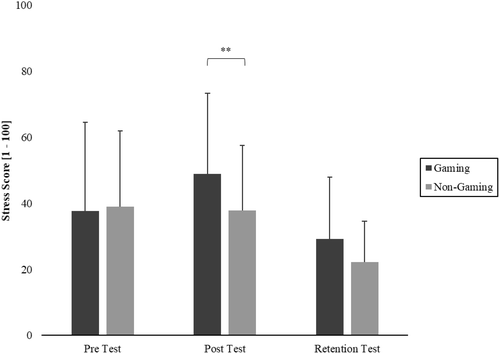
Immediately before the sessions, the participants’ stress was at similar levels, whereas afterward (post), the mean stress difference pre-post between G (MDiff = 11.23 ± 29.76) and NG (MDiff = –1.02 ± 16.74) was statistically significant (F(1,43) = 8.946, p = .005, ƞp² = .172, f = .456). Regarding the retention test the next morning, stress level difference postretention differed numerically between G (MDiff = –19.75 ± 24.14) and NG (MDiff = –15.66 ± 19.60). This mean difference is not significant (F(1,43) = 0.960, p = .333, ƞp² = .022, f = .150, 1 – ß = .494). In sum, findings indicate that gaming activity seems to influence individuals’ acute stress development, while this effect could not be detected in the retention test.
Discussion
The present study quantitatively examined the acute effects of esports, more precisely of a single nightly gaming session, on sleep and stress by comparing an excessive G to a relaxing NG session.
Influence of Gaming on Sleep
The measurements showed that TST following G was significantly reduced compared to NG. Notably, the decrease in TST of about 39 minutes following nightly G is identical to the findings of the German eSport Study 2019 (Froböse et al., 2019). Taken together, our sleep duration data show evidence for Hypothesis 1. Hypothesis 2 (that sleep quality differs significantly between G and NG) could not be confirmed. However, Exelmans and van den Bulck (2015) demonstrated a negative effect of gaming on sleep quality, and Lemola et al. (2013) found that subjective sleep quality serves as a mediator for the relationship between sleep duration and well-being. Our results are in line with contrary findings in the sleep research context, demonstrating that sleep quality is not directly influenced by a short-term/moderate deviation of normal sleep duration (Ohayon et al., 2017), which might be apparent in this study because of the single session trial. In addition, when assessing sleep in laboratory and in nonlaboratory settings, a difference between quantitatively measured (e. g., TST) in contrast to subjectively rated data (e. g., sleep quality) is often reported (Crivello et al., 2019; Ibáñez et al., 2018). Accordingly, feelings of recovery and well-being (subjective sleep quality) after 5 hours of sleep could be higher than after 8 hours of sleep, although the objective number of TST might assume a reduced sleep quality. This could be why the difference in sleep duration in the present study might not substantially influence sleep quality. Further, if we assume that participants normally spend a large part of their leisure time playing digital games, using electronic devices, and social media, then it is that ossible habituation effects occur. A day without gaming may not result in a significant change in sleep behavior and subjective sleep quality.
Based on the assessed parameter of TST, no conclusions can be drawn about whether participants had problems falling asleep or whether meaningful wake phases during the night following gaming arose. Bedtime and sleep stages would be essential variables here. In accordance with current literature (Ibáñez et al., 2019; Stone et al., 2020), the latter cannot be measured validly by smartwatches or fitness trackers; for this reason, we did not include them in the present study. To standardize G and NG conditions, we provided the same timeslots each evening and, because the study took place during participants’ regular school/work time (no holidays or weekend), we assumed normal bedtime and waketime.
Influence of Gaming on Stress
As an additional health parameter, we assessed the individual stress level before and after G vs. NG. Whereas we found a significant difference between post G vs. NG, in the retention test the next morning there were no significant differences in the stress levels between G and NG. The participants’ habituation to the competitive and stressful nature of esports could be a reason for the nonlasting effect of gaming on individuals’ stress. Complementary results were found in the investigation by Schmidt et al. (2020), who determined the stress levels of gamers via measurement of cortisol concentration at different time points. On the one hand, cortisol as a stress indicator hormone was significantly increased during gaming; on the other hand, the cortisol concentration differed when winning or losing the digital game. Notably, the gamers’ stress levels varied considerably between persons. These inconsistencies on the individual level could be explained by some unknown characteristics of the sample, such as gaming experience and whether the played games differed from the games they normally played. Taken together, these findings strengthen the hypothesis that gaming might have a negative effect on individuals’ stress levels, although our results do not support this in total. Likewise, based on the present results, we can draw no conclusions about whether gaming has a negative impact on the perception of stress and physical exhaustion. When we compared our data to those of other studies, we noticed, beside the wide range of intraindividual perception of stress, also a plurality of stress assessment methods. There are different ways to operationalize stress as harmful, positive or negative, mental or physical. When conducting studies in esports, it could be assumed that primarily mental stress is prevalent. Whereas Poulus et al. (2020) used questionnaires, we assessed the participants’ stress reaction to gaming via heart rate recording.
Nevertheless, our results are consistent with current literature revealing the effects of gaming on sleep behavior and stress (e. g., Altintas et al., 2019; Bonnar, Castine et al., 2019; Poulus et al., 2020). More precisely, besides the insufficient evidence regarding the effects of gaming on sleep quality, our findings serve as further proof regarding the influence of gaming on TST, and they identified at least the acute effects of esports on the objective stress level. Finally, because esports are becoming increasingly popular, especially among young people, gaming times are likely to increase in the future. Therefore, it is important to deal with the impact of gaming on individuals’ health and well-being (Pereira et al., 2019; Yin et al., 2020). In accordance with the results of our study showing a particularly high stress level caused by gaming, training programs focusing on suitable stress management and coping strategies, especially for young people, should be developed in the future (Smith et al., 2019).
Strengths and Limitations
While adding to the relatively young field of esports research, our study has some strengths that should be mentioned: First, to our knowledge, this is the first study to consider the triad of esports, sleep, and stress. Second, it is one of the few investigations to quantitatively examine the influence of gaming in an experimental intervention study. Third, the study was conducted in a real-world setting, which allows insights into the processes happening during esports. Therefore, our study has high external validity.
However, there are also some limitations to consider: First, we did not specify the inclusion criteria regarding game titles. Different games or sports simulations do not necessarily generate similar states of arousal/stress or excitement as first-person shooters (Reitman et al., 2020). To gain a deeper insight, authors should study the effects of different games separately in the future. Likewise, for replication and standardization reasons, the same study protocols should be applied to different esports players’ skill levels. Second, the period and the setting of the investigation itself could be seen as limitations: With only a single session of G and NG each, various distortion possibilities or other noncontrollable side effects such as ambient noise or the presence of roommates might influence the results. In addition, it is questionable to what extent a single evening without excessive gaming effectively changes the individual sleep behavior of participants who regularly have > 200 minutes of gaming time per day. Third, we did not retrospectively control how participants spent their nongaming evening. More practical/controlled specifications concerning the G and NG conditions might be appropriate. Fourth, to avoid the risk of measurement failures or missing values, an alternative assessment tool that automatically and continuously measures heart rate variability or the individuals’ stress level might be more reliable. In this sense, future studies should adapt the stress assessment as the operationalization of stress itself is variable: A differentiation between mental and physical stress might be reasonable. Further, more precise and holistic data would be on hand if questionnaires and the recording of heart rate variability were combined. Fifth, concerning the interpretation of the Garmin® stress scores, the lack of differentiation between positive and negative stress and the scoring (ranging from 1 to 100) itself is limited, i. e., the stress scores might only partially indicate participants’ actual stress level. The same challenge might occur regarding sleep assessment via the Garmin® smartwatch. Although fitness trackers seem to be an acceptable and reliable tool for assessing sleep and stress according to current research (Ibáñez et al., 2019), the data are not as precise as they would be when measuring sleep and stress parameters in a laboratory setting. Nevertheless, besides such difficulties in conducting, nonlaboratory/intervention studies might be more convincing regarding their practical relevance and implications. Because smartwatches are now able to assess a plurality of variables, especially in terms of sleep measures, future studies should extend the parameters studied. Beside the TST, for example, bedtime could be of special interest to answer whether gaming means just later bedtime or problems of falling asleep or meaningful awakenings during the night. Finally, we did not make any specifications concerning the computer or console screens, i. e., we did not consider that blue-light emission or the use of a blue-light filter might influence the results. As blue light seems to have a negative impact on sleep and concentration (Wahl et al., 2019), future studies should specify the use of blue-light emission (e. g., internal blue-light filter or blue-light glasses) and the distance to the screen because especially players of first-person shooters tend to sit very close to the screen.
Future Directions and Conclusion
Finally, because our research, like other studies, indicates a changed sleep behavior from nightly gaming, the effects of esports on sleep should be considered in more detail in the future. Besides theoretical and qualitative investigations, especially quantitative research and studies testing the effects of sleep interventions are required. For instance, Bonnar, Lee and colleagues (2019) formulated practical guidelines considering risk factors and possible sleep interventions to address the important role of sleep in esports. However, the identified effect of gaming on individuals’ stress levels should be handled with caution because of the risk of chronically impairing the immune system (Palanichamy et al., 2020; Stojanovich & Marisavljevich, 2008). Along this line, Emara et al. (2020) recently formulated a three-point plan for health and training monitoring of professional esports players. However, such a healthy approach to gaming might not only be implemented in the professional esports context but also seems to be a promising approach in the educational context to sensitize young people regarding the potential risks of excessive gaming for health-related factors and, consequently, to conduct suitable stress-reducing interventions.
In conclusion, while plenty of research has examined the relationship between sleep, stress, and physical sports, little is known about the influence of esports on sleep and stress. Although several psychophysiological demands in esports are similar to those found in traditional sports, the reciprocal impact of esports on health-related factors such as sleep and stress should be considered and investigated similarly. Following our results, excessive nightly gaming sessions seem to reduce sleep duration and increase feelings of stress. Future research should not only longitudinally examine the long-term effects of esports on health but also establish suitable sleep health interventions and stress coping strategies.
The authors thank Jan Latta and David Wickel for their assistance in data collection. There was no external funding.
